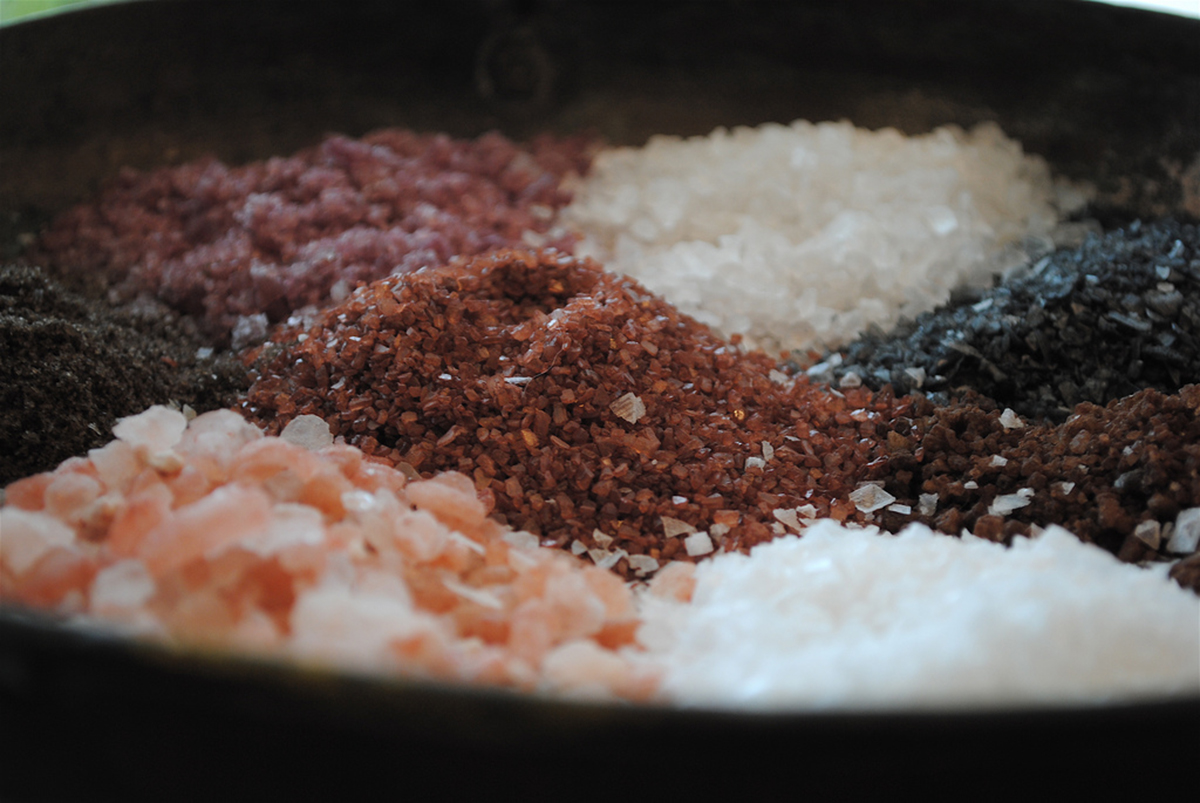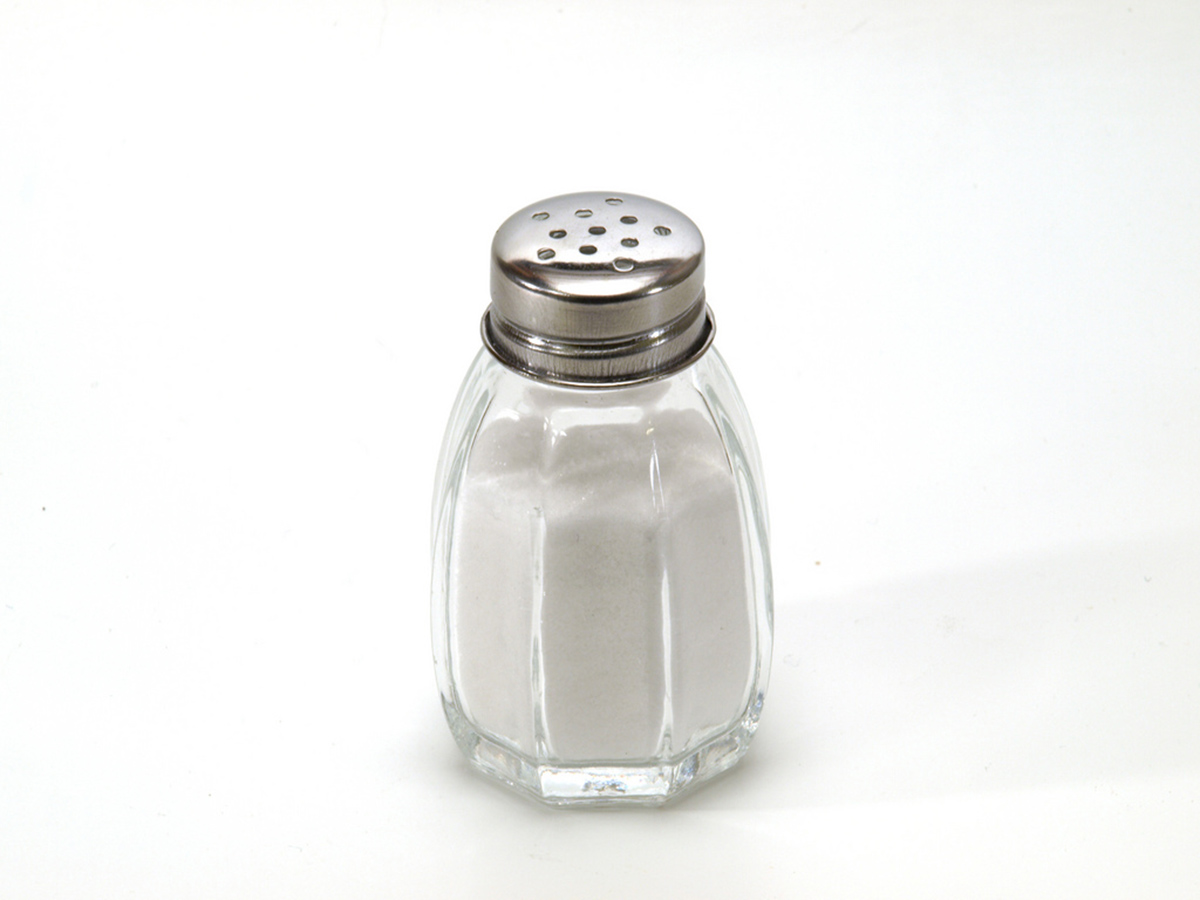Table salt is our biggest source of two vital elements, sodium, and chlorine, in the form of chloride. While the conventional wisdom is that most of us get too much salt, the fact is, we could not live without both sodium and chloride.
Sodium is essential to life because of its positive charge. Cells use positively charged sodium ions to keep the electrical charge on their outer membranes just negative enough to attract amino acids and regulating hormones. They also use sodium to import water and glucose. Every time a cell uses insulin to receive one molecule of glucose, it also imports three ions of sodium.

The body uses chloride to regulate acid-base balance. Chloride helps the bloodstream regulate the balance between carbon dioxide and oxygen. It also is part of the activation of neurons.
Everybody needs salt. The question is how much. Most often we hear about excessive sodium in the context of high blood pressure.
Does Excessive Consumption of Salt Really Cause High Blood Pressure?
If you live in the United States and you have high blood pressure, chances are that your doctor has given you a handout on the DASH (Dietary Approaches to Stop Hypertension) diet. The idea behind the DASH diet is that if you don't eat as much salt, then your bloodstream doesn't have to carry as much water to dilute it, and your blood pressure won't be as high.
There are people for whom the DASH diet is a vital part of controlling high blood pressure, but these are people who have an underlying difficulty with sodium regulation. For most of us, kidneys keep tight control over sodium levels. People who go on extremely restrictive diets may only see a 1-3 mm Hg reduction in blood pressure, and sometimes sodium restriction causes hyponatremia, low sodium levels. However, there are a few people for whom reducing salt normalizes blood pressure. The same sort of relationship seems to hold for liver health.
High Sodium Levels and Liver Fibrosis
A series of studies have found that high-sodium diets accelerate a process in the liver known as fibrosis. When the liver is chronically injured, either by alcoholism, hemochromatosis (high iron levels), constant exposure to chemicals, or viral infection, it tends to create fibers. Too much salt causes some liver cells to absorb too much water and lose their characteristic shape. They may not adhere in tissues where they should, leaving them to be removed by the immune system. They may injure neighboring cells, triggering the production of scar tissue. Fibrous tissue in the liver can't break down food into nutrients or store glucose as glycogen for quick energy. It can't recycle hormones or detoxify chemicals in food or from the environment. The more salt in the bloodstream, the less functional liver cells become, and the worse the symptoms of liver disease become.
READ Eating Less Salt Does Not Necessarily Cut High Blood Pressure and Heart Disease Risks
There's not a lot of room for doubt that people who consume the most sodium are the most likely to suffer fibrosis, which can lead to cirrhosis, of the liver. However, if you don't have a liver disease that leads to cirrhosis, then you probably don't need to restrict salt for your liver's health.
What Is Cirrhosis? What Are the Symptoms Of Cirrhosis?
Cirrhosis is a condition that gradually, typically over a period of 10 to 30 years, causes the liver to shrink. The liver's contours become distorted. Bands of tough, protein fibers grow around liver cells and gradually cut off circulation. With time, large areas of liver tissue are are engulfed by scar tissue that forms nodules. The condition can cause a variety of vague symptoms at first, such as:
- Appearance of small “spider veins” under the skin
- Bleeding hemorrhoids
- Confusion and memory issues
- Erectile dysfunction in men
- Jaundice (yellowing of the skin)
- Loss of interest in sex in both sexes
- Nausea
- Vomiting stomach contents
- Vomiting blood
- Weakness
- Weight loss

As the disease progresses, it may also cause:
- Abdominal pain
- Bleeding gums
- Breast enlargement in men
- Clay-colored or pale stools
- Decreased volume of urine
- Fever
- Flatulence, gas
- Nosebleed
By the time symptoms of the more advanced disease occur, cirrhosis of the liver is hard to treat. Until that time, however, dietary interventions can make a big difference.
Eating less salt is only part of what people who have chronic liver disease need to do to prevent the progression of fibrosis to cirrhosis. The kind of sodium restriction that makes a difference in liver disease isn't severe. It's more on the lines of avoiding extremely salty foods, like salted cod, smoked meats, and smoked cheeses, and limiting the consumption of canned foods (which contain added salt to mask the "tinned" taste). It isn't necessary to avoid relatively high-sodium vegetables such as celery, carrots, and beets. Of course, if your doctor tells you that you need to follow a more restricted diet, then you should follow medical advice.
What probably will help even more is to avoid excessive consumption of calories. The reason calorie-restriction, best achieved by eliminating most sugars and all fried foods, makes a difference in liver health is that eating less gives your liver less to do. When you eat too many carbohydrates, your liver stores the excess glucose by combining the sugar with water. Getting water into a liver cell requires pumping sodium into the cell. Liver cells that are already under stress from viral infection, toxic exposure, or diabetes are stressed even more in the process of making glycogen. The less carbohydrate you eat, the less glycogen your liver will have to make and then break down back into sugar and water later.
READ Cystic Fibrosis: Increased Life Expectancy And New Hope
Simply cutting back on carbohydrate consumption is an especially useful strategy when you are dealing with fibrosis and cirrhosis caused by chronic infection with hepatitis C. Especially if you are overweight, simply cutting back your consumption of food enough to lose a mere 2 to 3 percent of your total body weight (as little as 3 to 9 pounds/1.5 to 4 kilos) may be enough of a vacation from food to give your liver an opportunity to keep itself structurally intact.
- Huh JH, Lee KJ, Lim JS, Lee MY, Park HJ, Kim MY, Kim JW, Chung CH, Shin JY, Kim HS, Kwon SO, Baik SK. High Dietary Sodium Intake Assessed by Estimated 24-h Urinary Sodium Excretion Is Associated with NAFLD and Hepatic Fibrosis. PLoS One. 2015 Nov 16.10(11):e0143222. doi: 10.1371/journal.pone.0143222. eCollection 2015. PMID: 26571018.
- Photo courtesy of dinesarasota: www.flickr.com/photos/dinesarasota/4812611934/
- Photo courtesy of soraZG: www.flickr.com/photos/11939863@N08/3793288383/
- Photo courtesy of dinesarasota: www.flickr.com/photos/dinesarasota/4812611934/

